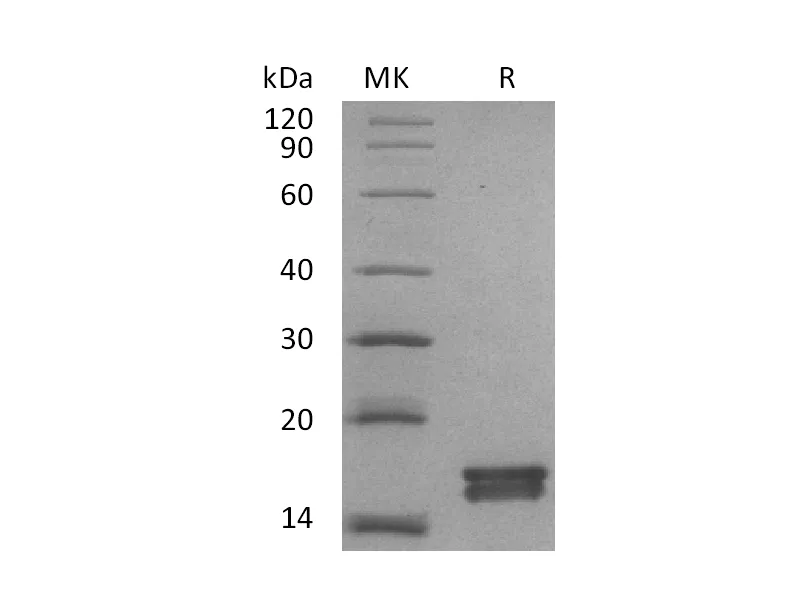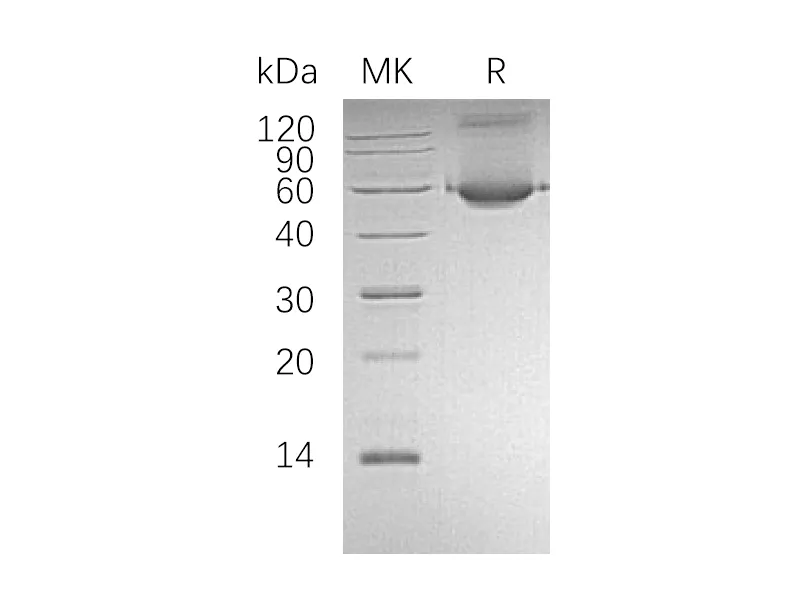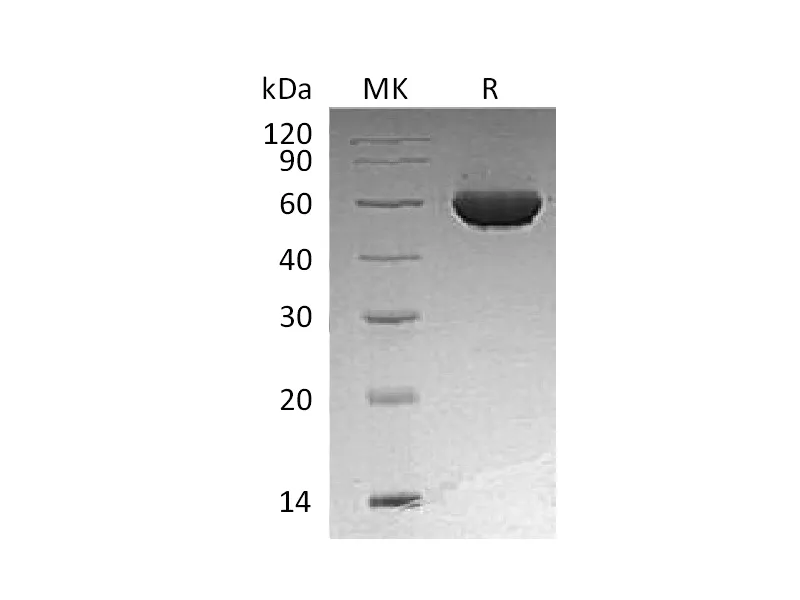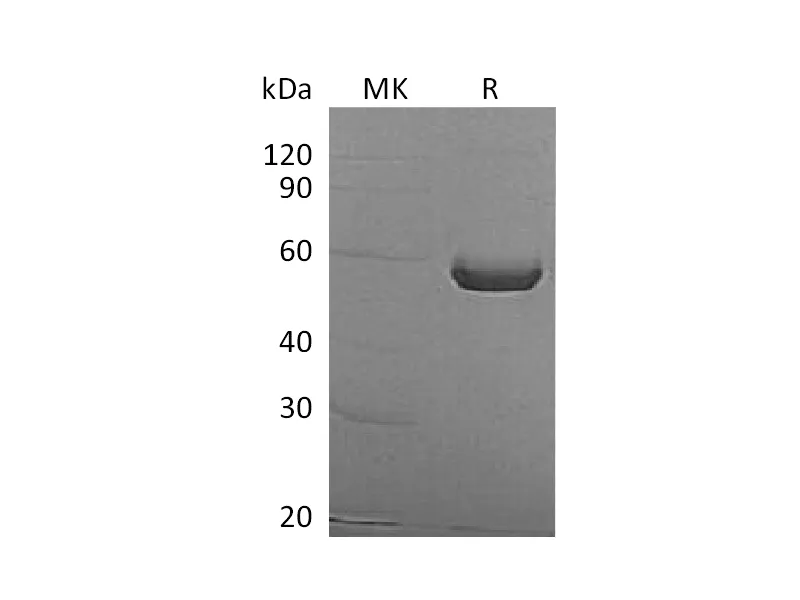Alternative Names
Olfactomedin-4; OLM4; Antiapoptotic protein GW112; G-CSF-stimulated clone 1 protein; hGC-1; hOLfD; OLFM4; GW112
Background
Olfactomedin-4/OLFM4 is a secreted protein which contains one olfactomedin-like domain. OLFM4 is expressed during myeloid lineage development,it strongly expressed in the prostate,small intestine,colon and moderately expressed in the bone marrow and stomach. OLFM4 is an antiapoptotic factor that promotes tumor growth. It expressed at high levels in stomach cancer and colon cancer tissues. it promotes proliferation of pancreatic cancer cells by favoring the transition from the S to G2/M phase. In myeloid leukemic cell lines, OLFM4 inhibits cell growth and induces cell differentiation and apoptosis. Through interaction with cell surface lectins and cadherin, OLFM4 facilitates cell adhesion. It may play a role in the inhibition of EIF4EBP1 phosphorylation/deactivation. Induction of OLFM4 in cancer cells was reported to have a novel antiapoptotic action via binding to the potent apoptosis inducer GRIM-19.
Note
For Research Use Only , Not for Diagnostic Use.




